Key takeaways:
- Understanding your audience is essential for tailoring proposals to their specific needs and aspirations, enhancing connection and effectiveness.
- Effective proposals require clarity in objectives, demonstrated value, and supporting evidence to build credibility and trust with readers.
- Structuring proposals with clear headings, bullet points, and compelling summaries improves readability and reinforces key messages.
- Reviewing and refining proposals with a fresh perspective and seeking feedback from colleagues enhances clarity and coherence in communication.
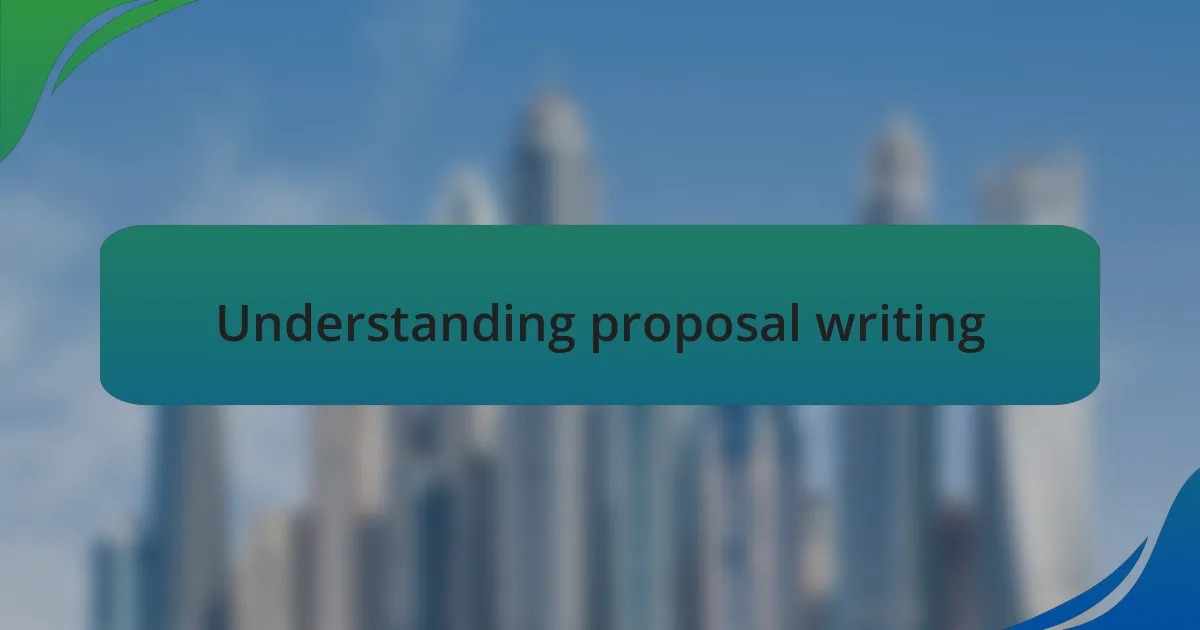
Understanding proposal writing
Proposal writing is a nuanced process that requires both creativity and precision. I remember the first time I crafted a proposal for an SME project; I felt a mix of excitement and anxiety, wondering if my ideas would resonate with my audience. Each proposal is not just a document but a chance to build a connection, addressing specific needs while clearly communicating the value of your ideas.
Understanding your audience is crucial in proposal writing. I find it incredibly helpful to put myself in the reader’s shoes; what challenges are they facing? This perspective allows me to tailor my proposals to not just present solutions, but to highlight how those solutions align with their goals and aspirations. It’s this alignment that often makes a proposal stand out.
Additionally, the structure of a proposal can make a significant impact. I’ve learned through experience that it’s not just about what you say but how you say it. Breaking the content into digestible sections with clear headings and bullet points helps convey my message effectively. Don’t underestimate the power of visuals, either; sometimes, a well-placed chart or graph can communicate insights more efficiently than words alone.
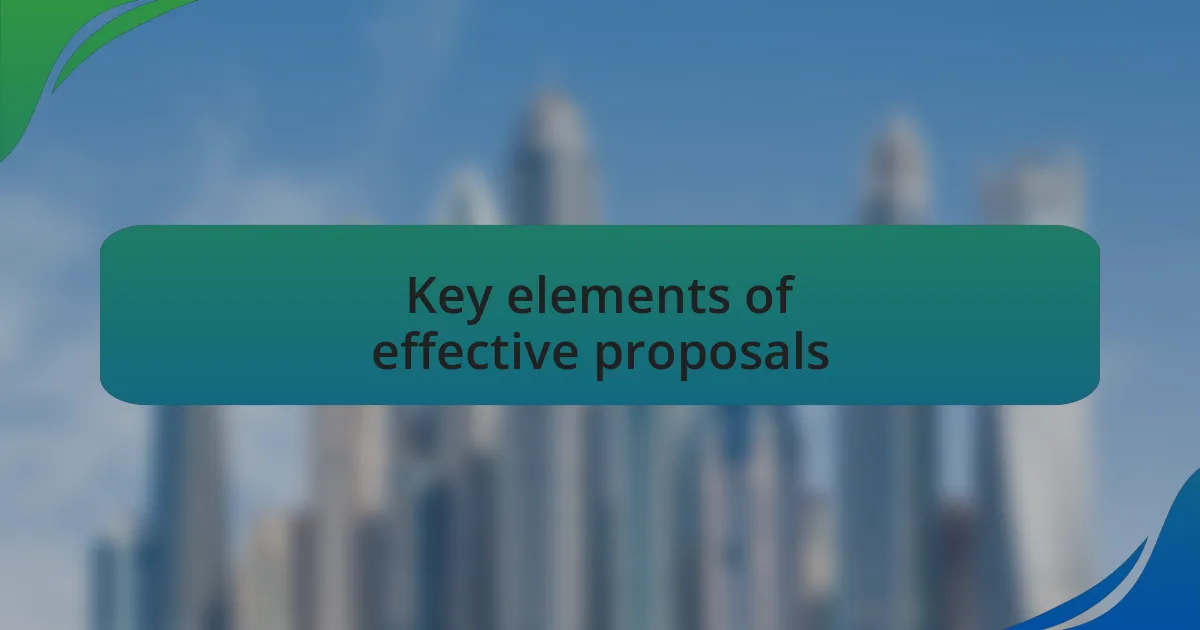
Key elements of effective proposals
One key element of effective proposals is clarity in objectives. I remember a time when I submitted a proposal with ambitious goals but didn’t articulate them properly. The feedback made me realize that without clear, measurable objectives, it’s easy for readers to lose track of your purpose. You want your audience to immediately grasp what you aim to achieve and how.
Another critical aspect is demonstrating value. In my experience, outlining the benefits of your proposed solution can be the difference between a proposal being accepted or rejected. Have you ever noticed how people respond to tangible benefits? They want to feel that what they’re investing in will yield a real return. By explicitly stating these advantages, you not only strengthen your proposal but also build trust with your readers.
Lastly, I can’t stress enough the importance of supporting evidence. Whenever I weave in data, case studies, or testimonials, it adds a layer of credibility that resonates with decision-makers. Remember that proposals aren’t just about being persuasive—they’re also about building a foundation of trust. When you provide concrete examples to back up your claims, you’re showing that your ideas aren’t just wishful thinking; they’re grounded in reality and proven success.

Researching your target audience
Understanding your target audience is fundamental to crafting a meaningful proposal. I recall a project where I immersed myself in the demographics and preferences of my potential clients. By paying attention to their specific challenges and aspirations, I was able to tailor my message, creating a sense of connection. Have you ever felt like a proposal truly spoke to your needs? It’s that kind of personalized approach that draws people in.
Another aspect I’ve found beneficial is utilizing surveys or informal interviews to glean insights directly from your audience. In one instance, I reached out to former clients and asked what they valued most in a proposal. The feedback not only clarified what features resonated the most but also illuminated areas I had overlooked. It’s fascinating how a few conversations can reshape your approach entirely.
Don’t forget to analyze your competition too. I often review how others engage similar audiences. One time, I discovered a competitor emphasizing price over quality, which allowed me to pivot my focus on the long-term value my proposal offered. This competitive analysis helped me position my ideas strategically, ensuring I stood out in a crowded market while still addressing my audience’s needs.
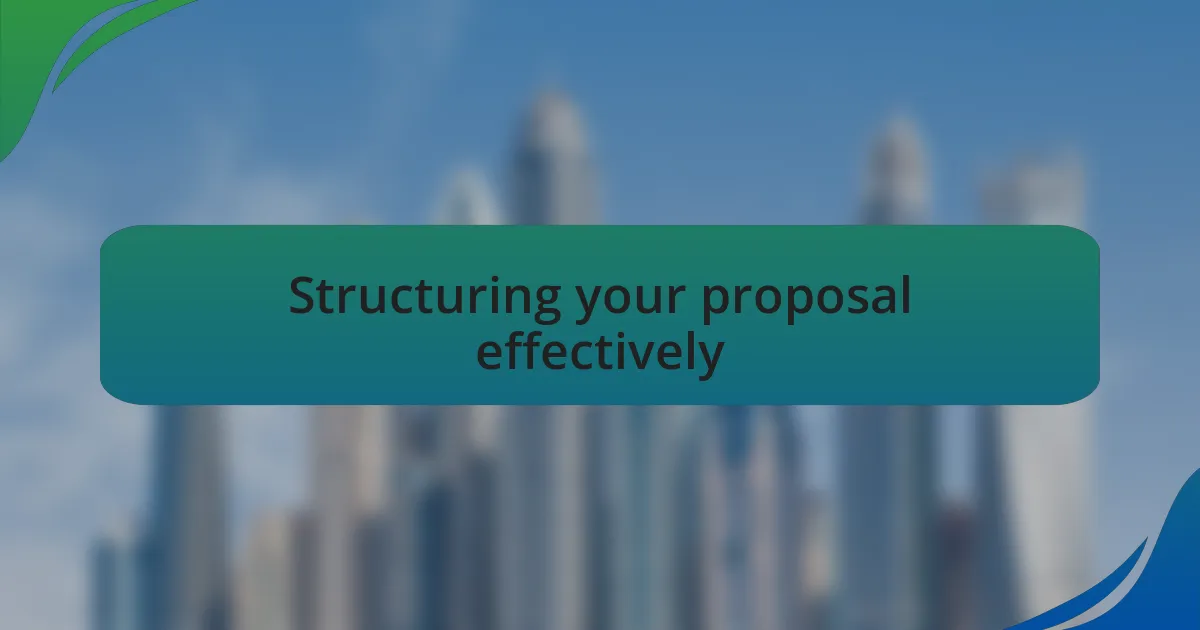
Structuring your proposal effectively
Structuring your proposal effectively hinges on clarity and logical flow. I remember working on a proposal where I meticulously broke down each section, ensuring that the problem statement was crystal clear, followed by proposed solutions, and then wrapped it up with expected outcomes. It felt rewarding to see how this organization helped the reader easily navigate through the complexities of my ideas. Do you often find yourself lost in dense proposals? A well-structured document can really prevent that feeling.
Another key element is to use headings and bullet points strategically. During one project, by using bullet points to highlight crucial benefits, I was able to grab attention quickly. This not only made the proposal aesthetically pleasing but also enabled my reader to digest the key points without feeling overwhelmed. Isn’t it refreshing when a proposal feels more like a conversation than a chore?
Finally, a compelling summary section at the end can reinforce your main messages. I once included a brief recap that not only summarized the main points but also tied them back to the audience’s initial concerns. This connection reinforced the relevance of my proposal and left the reader with a lasting impression. Have you considered how a strong closing can influence decision-making? It’s those last moments that can tip the scale in your favor.
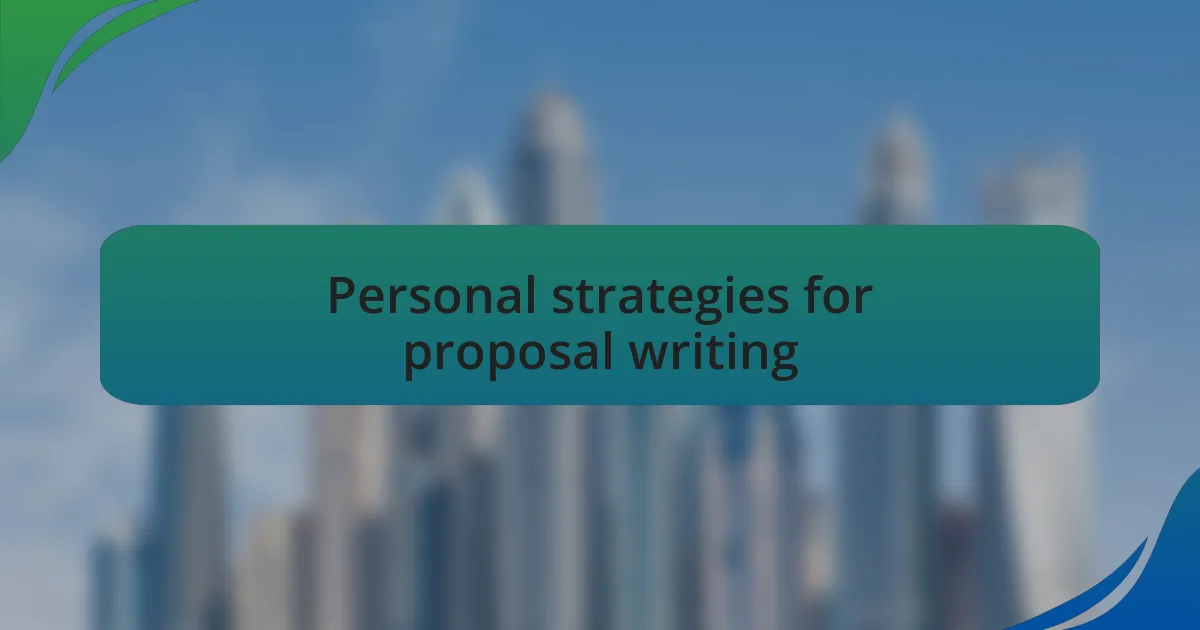
Personal strategies for proposal writing
When it comes to proposal writing, I find that starting with a personal story can make a significant impact. For instance, in one proposal I worked on, I began with a narrative about a small business owner who faced a specific challenge. This approach not only humanized the issue but also drew in my audience emotionally. Have you ever noticed how a relatable story can captivate attention and set the stage for the rest of the proposal?
Another strategy I employ is visualizing the proposal from the reader’s perspective. I often ask myself, “What questions might they have?” By anticipating potential objections or areas of confusion, I address them proactively within my proposal. Once, this led me to include an FAQ section that clarified common doubts. It felt great to provide that clarity, and it certainly made my proposal stand out. Have you ever thought about how addressing questions before they’re asked can strengthen your case?
Lastly, I make it a practice to keep my language engaging and straightforward. I remember receiving feedback on a particularly technical proposal that lost steam because of jargon-heavy passages. Learning from that experience, I decided to simplify my wording and use analogies that resonated with my audience. Have you ever tried breaking down complex ideas into relatable concepts? It can be remarkably effective in enhancing understanding and maintaining interest.
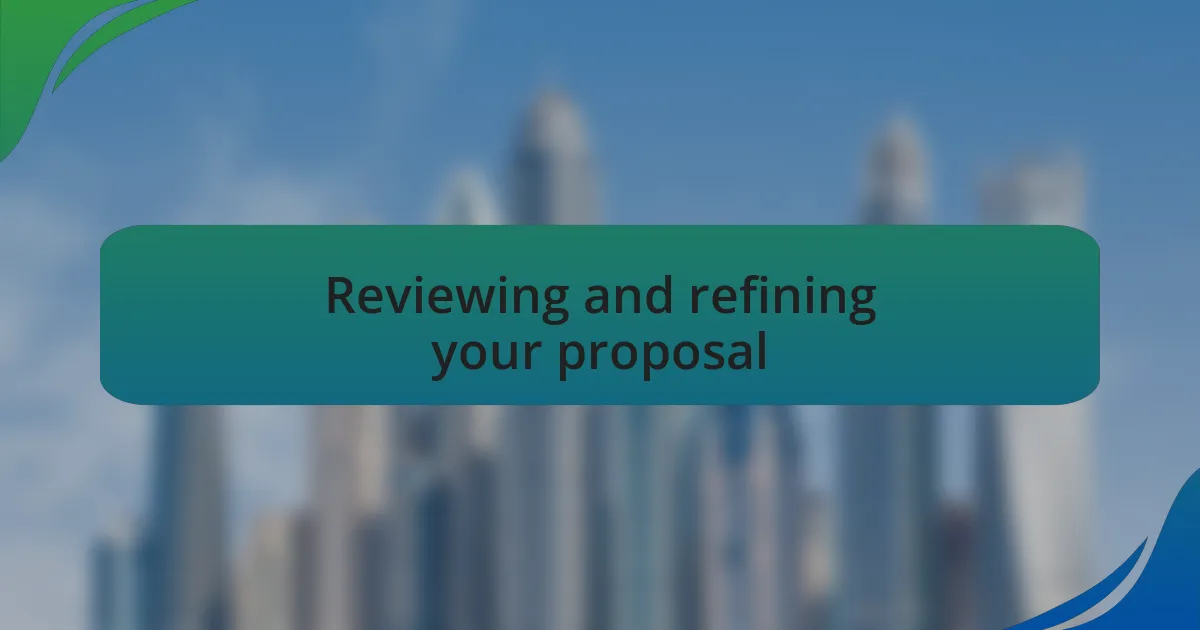
Reviewing and refining your proposal
Reviewing and refining a proposal can feel like a daunting task, but I’ve found that stepping away for a bit often brings clarity. After finishing a draft, I like to take a day to do something completely different. When I return, I’m amazed at how easily I spot awkward phrasing or parts that don’t flow well. Have you experienced that moment when a fresh set of eyes—your own—makes all the difference?
One of my key techniques is to share my drafts with a trusted colleague for feedback. It’s surprising how another perspective can shed light on sections that might need more detail or clearer explanations. I remember a proposal where a colleague pointed out that my solutions felt too abstract. That insight led me to add specific examples, which made the proposal not only stronger but also more relatable. Don’t you think that collaborative input can elevate your work?
Finally, I pay close attention to the proposal’s overarching narrative. It’s easy to get lost in details, but I always ask myself if each part serves the overall story I’m trying to tell. During one review, I realized that I’d veered off course by including irrelevant statistics. By cutting those sections, I allowed the core message to shine through more clearly. Have you ever found that less truly is more when it comes to proposal writing?